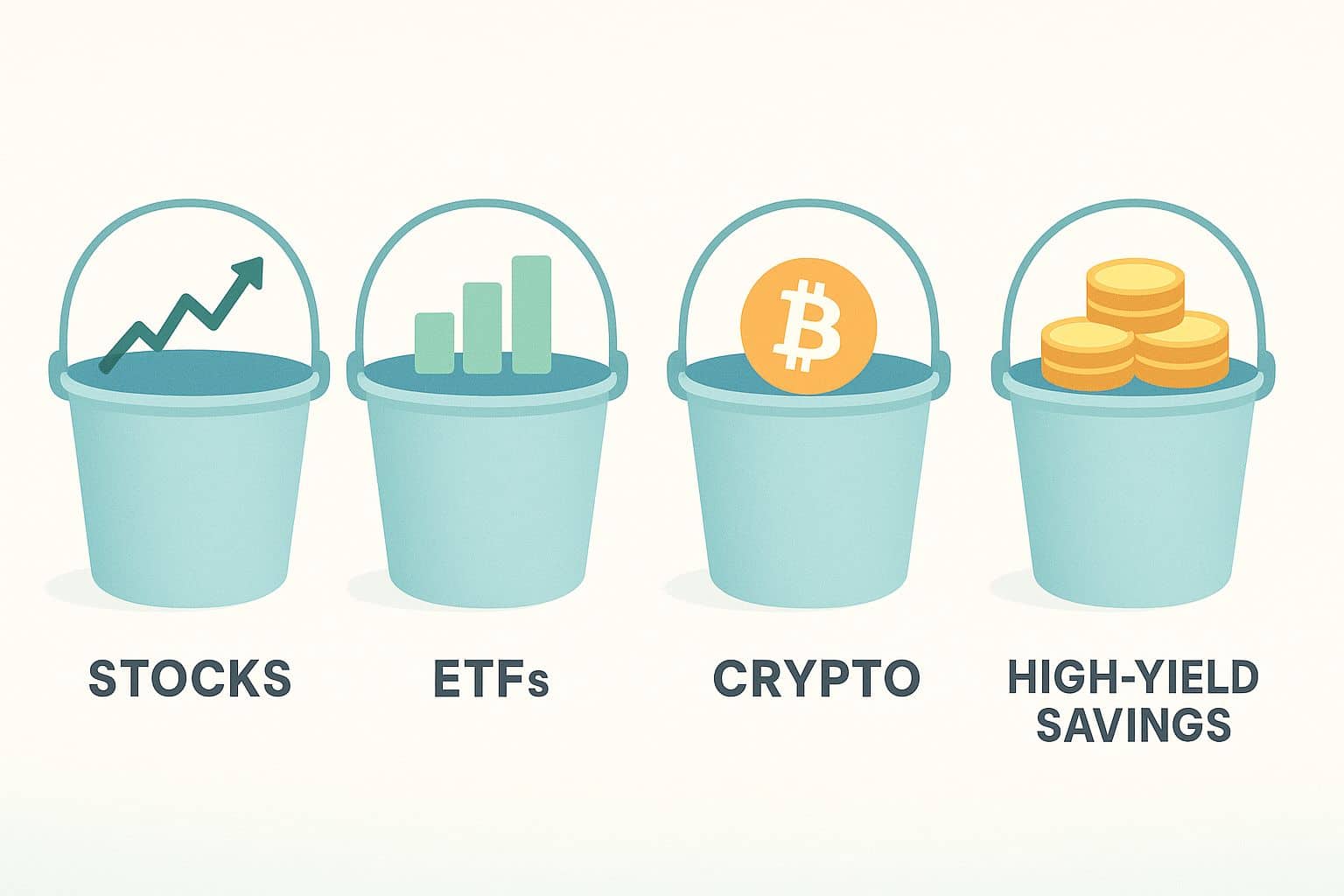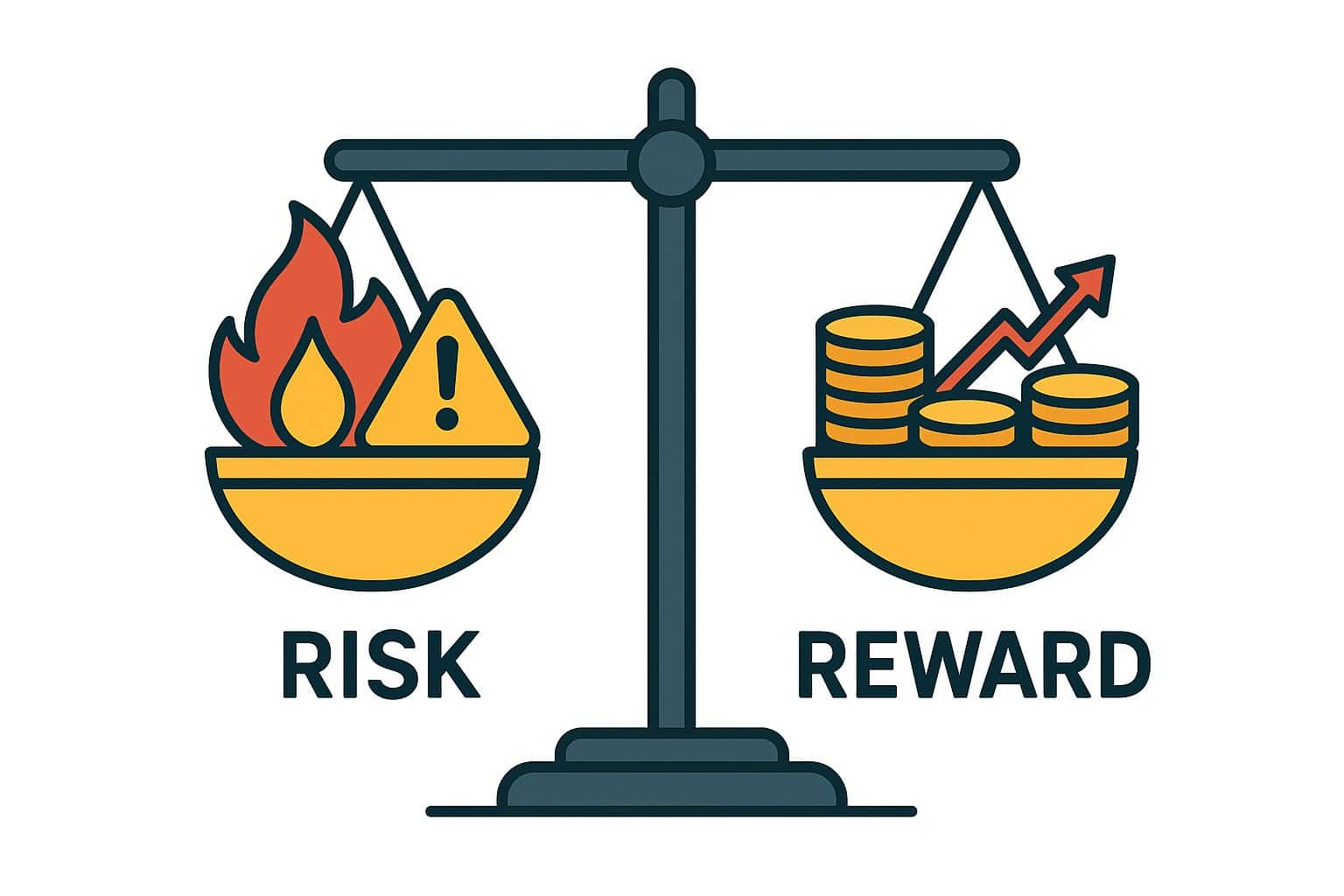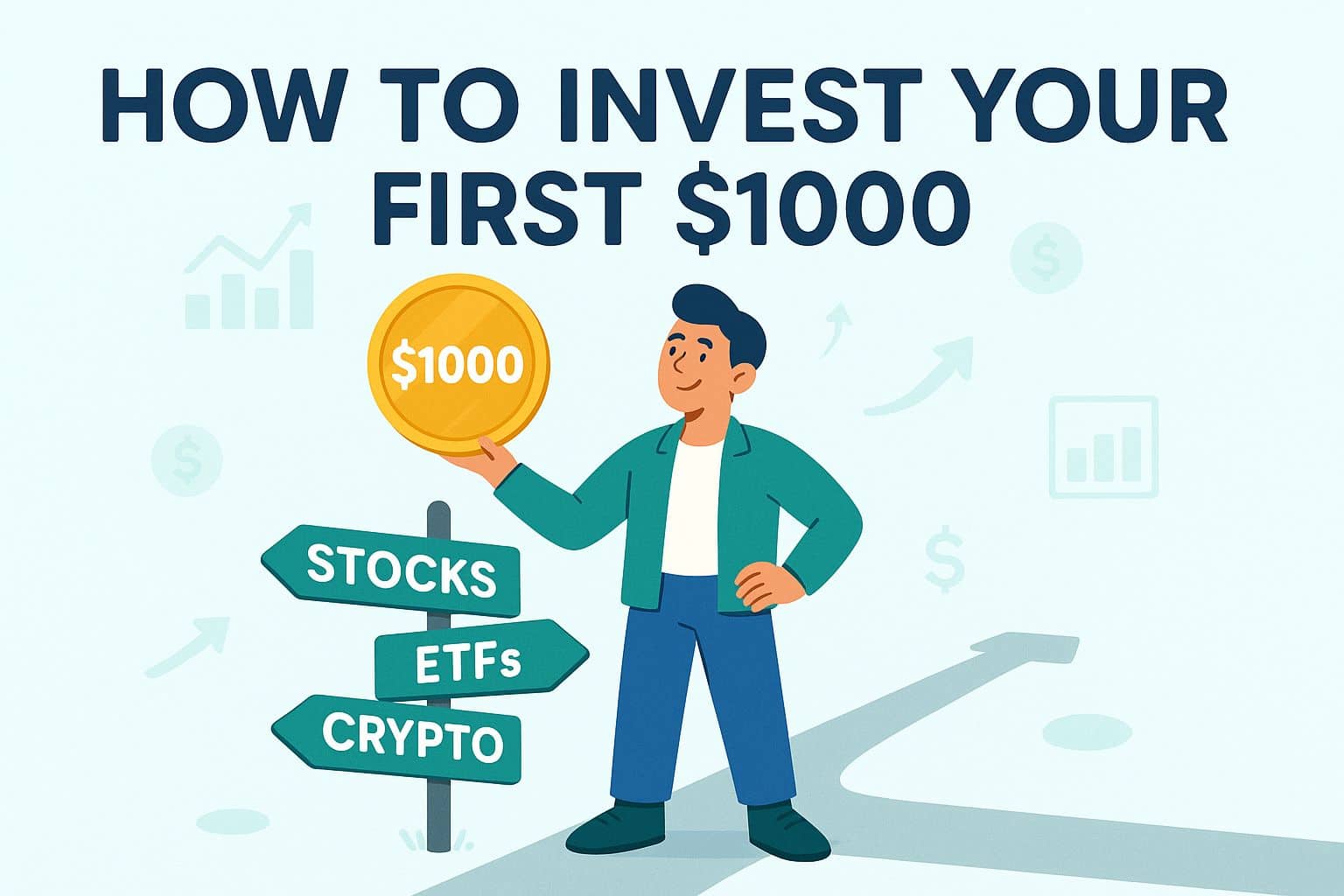How to Invest Your First $1000
So, you’ve finally saved up your first $1000. First off—congrats! That’s no small feat, especially with how fast money seems to disappear these days. Now you’re wondering: What’s the best way to invest your first $1000 to make it grow exponentially?
Whether you’re aiming to turn that $1,000 into $10,000 over time or just want to avoid letting it sit idle in a savings account, you’re in the right place. This guide will walk you through beginner-friendly, smart, and low-risk investment options with long-term potential.
Let’s make that first $1,000 count.
Table of Contents
ToggleWhy You Shouldn’t Wait to Invest
When you only have $1,000 to invest, it might feel like a drop in the ocean. But the real magic isn’t in the amount—it’s in getting started early and letting compounding work its magic.
As a saying: Think of investing like planting a tree. $1,000 today might be a seed, but given time, sunlight (strategy), and water (patience), it can grow into something much bigger.
1. Start with Clear Goals

Before diving into investment platforms, ask yourself:
What’s the purpose of this money? (Emergency fund? Long-term growth?)
When might you need it?
How much risk can you tolerate?
Your answers will help determine the best strategy to invest your first $1,000.
2. Consider Low-Risk Investments First
If you’re not ready to stomach stock market dips, that’s okay. You can start with low-risk investments that still offer some returns without keeping your cash under the mattress.
High-Yield Savings or Money Market Accounts
Great for short-term goals or emergency funds
FDIC-insured (in the U.S.)
Current interest: ~4–5% APY (as of 2025)
Series I Savings Bonds (U.S. only)
Government-backed
Protect against inflation
Low risk with moderate return potential
These won’t double your money overnight, but they’re ideal if preserving your principal is priority.
3. Explore Fractional Shares Investing
Here’s the good news: You don’t need to buy a whole share of Amazon or Tesla to get started.
Thanks to platforms like, Fidelity, and Charles Schwab, you can invest in fractional shares—buying a slice of a stock or ETF with as little as $1.
Why It Works for First-Time Investors
You can diversify with just $1,000
Great way to learn how the stock market works
Start building a habit of regular investing
Example: Instead of spending $1,000 on one Apple share, you could split it across 5–10 different companies or index funds to reduce risk.
4. Go the Lazy (But Smart) Way: Index Funds & ETFs

If you don’t want to pick individual stocks—and honestly, many beginners shouldn’t—then index funds and ETFs are your new best friends.
These funds spread your money across hundreds of companies, offering instant diversification.
Best Options for New Investors
S&P 500 ETFs (like SPY or VOO): Track the top 500 U.S. companies
Total Market ETFs (like VTI): Even broader exposure
Dividend ETFs: Provide regular income and growth
Set it and forget it. No day trading required.
5. Use Robo-Advisors for Hands-Off Growth
Want someone (or something) else to handle the hard part?
Robo-advisors like Betterment, Wealthfront, or SoFi Invest create personalized portfolios based on your goals and risk level—for low fees.
Pros
Automated rebalancing
Goal tracking
Fractional investing included
Requires minimal time or effort
6. Reinvest Your Returns (Magic of Compounding)
No matter where you invest, reinvest any returns you earn.
- This is where compounding steps in—earning returns on top of returns.
Even a modest annual return of 7% can turn $1,000 into $10,000 in about 34 years if you don’t add another penny. But if you contribute monthly—even just $50—you’ll reach that goal way faster.
7. Think Long-Term: How to Grow $1,000 into $10,000
Let’s say you reinvest all earnings and add just $100/month to your portfolio.
With a 7% average return, you could hit $10,000 in about 6 years
If you boost contributions to $200/month? Less than 4 years
The takeaway: the more consistent you are, the more powerful compounding becomes.
8. Avoid Common Beginner Mistakes

Here are a few traps to dodge when you’re just starting out:
Chasing hype: Don’t throw all your money into meme stocks or crypto because of social media FOMO.
Lack of diversification: Spreading your money out helps reduce risk.
Ignoring fees: Investment fees eat into your gains—look for low-fee funds or platforms.
Key Takeaways: The Best Time to Invest Is Now
You don’t need thousands of dollars to begin. With the tools and platforms available today, you can invest $1,000 right now in ways that are smart, safe, and scalable.
The earlier you start, the better your chances of long-term success. It’s less about what you invest in and more about building the habit, learning as you go, and letting time do the heavy lifting.
Start where you are, use what you have, and begin today.
FAQs About Invest Your First $1000
Start with low-cost index funds or ETFs using a platform that allows fractional shares. Robo-advisors are also great for beginners who want a hands-off experience.
If you’ve done your research and the market conditions are stable, investing a lump sum may yield better long-term results. But dollar-cost averaging helps reduce risk.
Fractional shares allow you to buy a portion of a stock or ETF, making it easier to diversify even with small amounts of money.
Yes—high-yield savings accounts, money market funds, and Series I Bonds are great low-risk options for conservative investors.
If you prefer automation and less involvement, go with a robo-advisor. If you want full control, DIY investing might suit you better.
Popular beginner-friendly platforms include Robinhood, Fidelity, Schwab, Betterment, and SoFi Invest. Look for low fees and educational resources.
Ideally, keep it invested for at least 3–5 years. The longer you stay in, the more likely you’ll benefit from market growth and compounding.
Absolutely. Many platforms offer guided tools and educational support so you can confidently start investing on your own.
Be part of the FinanceCult community


